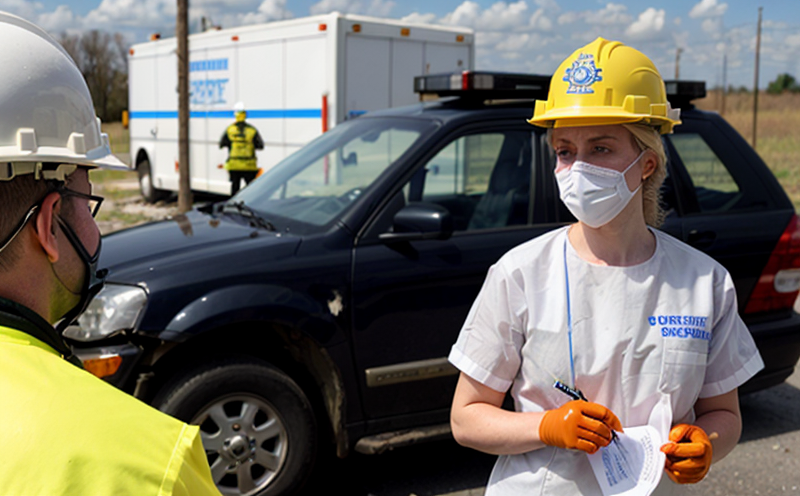ISO 18589-7 Cs-137 Testing of Environmental Samples in Emergencies
The ISO 18589 series provides a comprehensive framework for the measurement and assessment of radioactive contamination. Among these, ISO 18589-7 specifically addresses the testing of environmental samples to determine the presence of cesium-137 (Cs-137) in emergency situations.
Cs-137 is a common radionuclide used for various industrial and medical applications. However, it can also pose significant health risks if released into the environment. In emergencies involving Cs-137 release, accurate measurement of its concentration in environmental samples such as soil, water, or foodstuffs is crucial for ensuring public safety.
Our laboratory adheres strictly to ISO 18589-7 standards when performing Cs-137 testing. This includes rigorous sample preparation, careful selection of detection methods, and stringent quality control measures. The testing process typically involves the following steps:
- Sample Collection: We collect representative samples from affected areas to ensure that the results accurately reflect the overall contamination levels.
- Sample Preparation: Samples are prepared according to ISO 18589-7 guidelines, ensuring they are suitable for analysis by gamma spectroscopy.
- Detection and Analysis: Using high-purity germanium detectors (HPGe), we perform precise measurements of Cs-137 activity. The results are compared against international reference values to ensure accuracy.
The primary goal of this testing is not only to identify the presence of Cs-137 but also to quantify its concentration accurately, which helps in assessing potential risks and guiding appropriate remediation efforts.
Our expertise extends beyond mere compliance with ISO standards. We provide detailed reports that include a comprehensive analysis of sample results along with recommendations for further actions if necessary. These reports are invaluable tools for decision-makers responsible for emergency response and environmental safety.
Industry Applications
- Emergency Response: In situations where there has been a release of Cs-137 into the environment, our testing helps assess immediate risks and guide cleanup efforts.
- Environmental Monitoring: Continuous monitoring following an incident can help track the reduction in contamination levels over time.
- Food Safety: Ensuring that agricultural products are safe for consumption post-emergency is critical, and our tests play a key role in this process.
Why Choose This Test
The ISO 18589-7 standard ensures that the testing of Cs-137 is conducted with precision and reliability, which is essential in emergency situations. By adhering to these standards, we provide accurate and actionable data that can help mitigate risks to public health and the environment.
The test results are not only important for immediate response but also serve as a baseline for future monitoring efforts. This information is critical for long-term planning and management of radioactive waste disposal sites.
Our laboratory uses state-of-the-art equipment and highly trained personnel to ensure that every test conducted meets the highest standards of accuracy and repeatability. We offer fast turnaround times without compromising on quality, allowing decision-makers to act swiftly in emergency scenarios.
Environmental and Sustainability Contributions
The accurate assessment of Cs-137 levels through ISO 18589-7 testing contributes significantly to environmental sustainability. By identifying contaminated areas promptly, we enable targeted remediation efforts that minimize the spread of contamination.
This testing also supports sustainable practices by ensuring that agricultural and water supplies remain safe for use. The data provided helps in making informed decisions about land reuse and resource management post-emergency.
Furthermore, our services play a crucial role in supporting international commitments to reduce radioactive waste and protect public health. By providing reliable testing results, we contribute to the global effort towards sustainable development goals.





